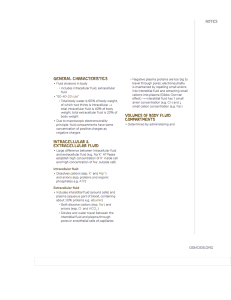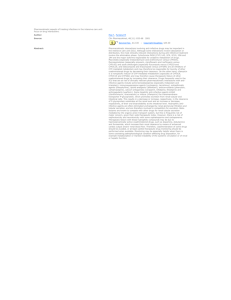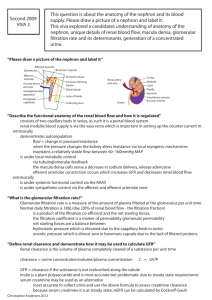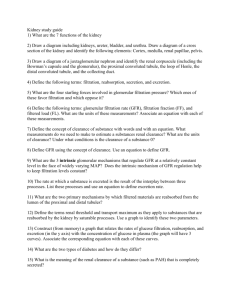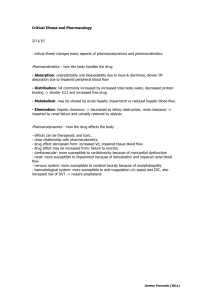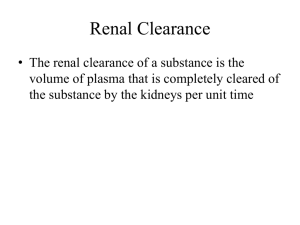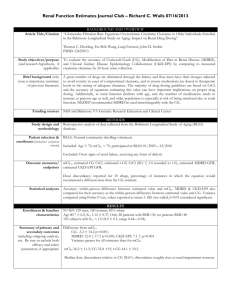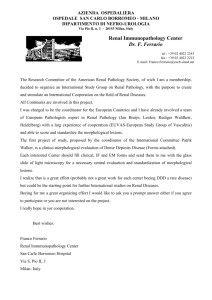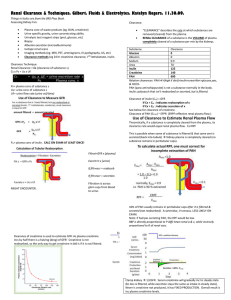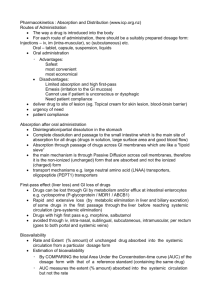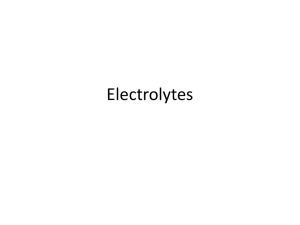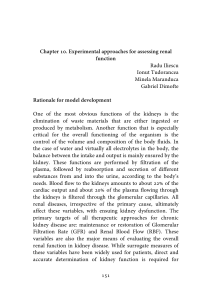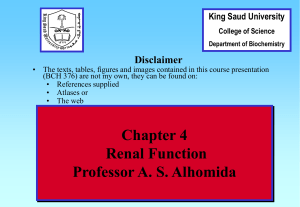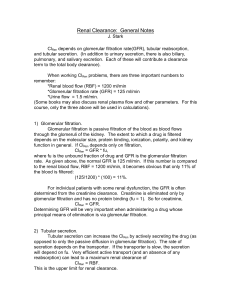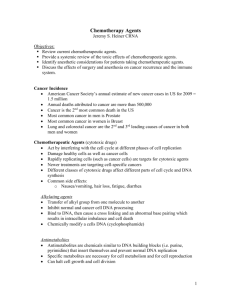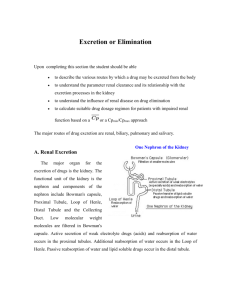BS2560 Pharmacology and Toxicology
advertisement
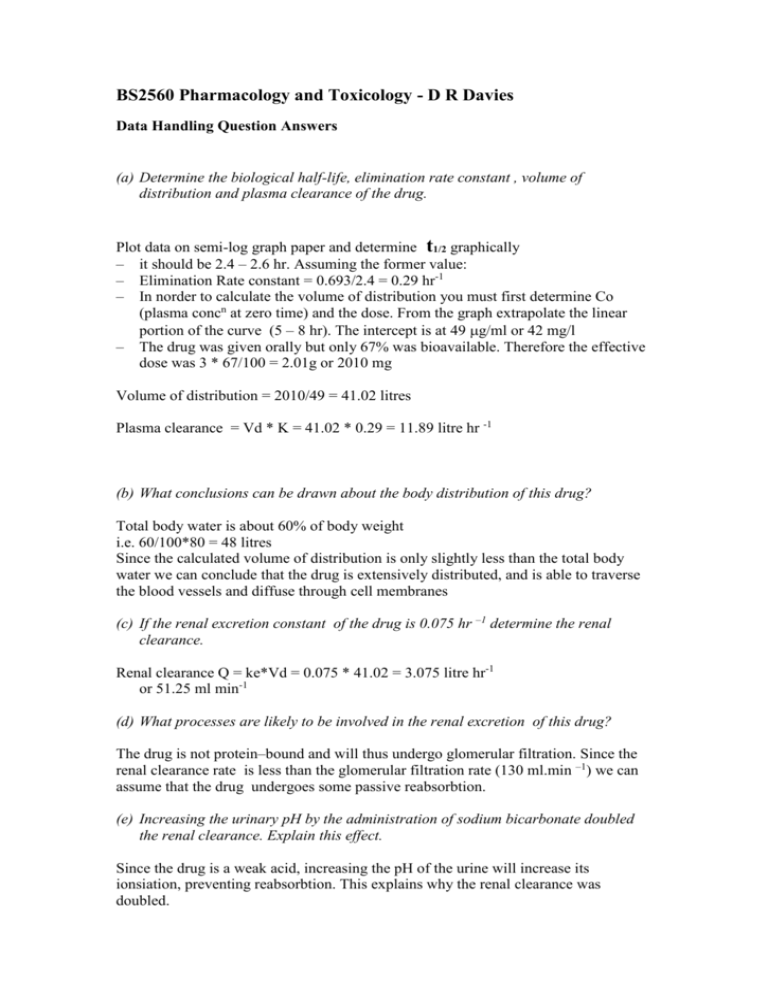
BS2560 Pharmacology and Toxicology - D R Davies Data Handling Question Answers (a) Determine the biological half-life, elimination rate constant , volume of distribution and plasma clearance of the drug. Plot data on semi-log graph paper and determine t1/2 graphically – it should be 2.4 – 2.6 hr. Assuming the former value: – Elimination Rate constant = 0.693/2.4 = 0.29 hr-1 – In norder to calculate the volume of distribution you must first determine Co (plasma concn at zero time) and the dose. From the graph extrapolate the linear portion of the curve (5 – 8 hr). The intercept is at 49 g/ml or 42 mg/l – The drug was given orally but only 67% was bioavailable. Therefore the effective dose was 3 * 67/100 = 2.01g or 2010 mg Volume of distribution = 2010/49 = 41.02 litres Plasma clearance = Vd * K = 41.02 * 0.29 = 11.89 litre hr -1 (b) What conclusions can be drawn about the body distribution of this drug? Total body water is about 60% of body weight i.e. 60/100*80 = 48 litres Since the calculated volume of distribution is only slightly less than the total body water we can conclude that the drug is extensively distributed, and is able to traverse the blood vessels and diffuse through cell membranes (c) If the renal excretion constant of the drug is 0.075 hr –1 determine the renal clearance. Renal clearance Q = ke*Vd = 0.075 * 41.02 = 3.075 litre hr-1 or 51.25 ml min-1 (d) What processes are likely to be involved in the renal excretion of this drug? The drug is not protein–bound and will thus undergo glomerular filtration. Since the renal clearance rate is less than the glomerular filtration rate (130 ml.min –1) we can assume that the drug undergoes some passive reabsorbtion. (e) Increasing the urinary pH by the administration of sodium bicarbonate doubled the renal clearance. Explain this effect. Since the drug is a weak acid, increasing the pH of the urine will increase its ionsiation, preventing reabsorbtion. This explains why the renal clearance was doubled. (f) If the minimum effective plasma concentration is 3.5 g/ml, comment on the efficiency of this preparation. If the minimum effective concentration is 3,5 g/ml the drug becomes effective after 1 – 1.5 hr and the effect is maintained for at least 8 hr indicating a clearly efficient drug.
